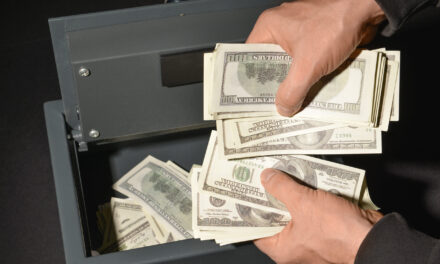Has the Pain Come and Gone?
During the great bond bull market from September 1981 to July 2020 the yield on the 10-Year Treasury note fell from 15.32% to 0.62%. Since then, the yield has spiked up to where it currently sits at about 4.66%.
The rapid interest rate flux has been unpleasant for bankers, borrowers and businesses. By our estimation the unpleasantness has only just begun.
After nearly 40 years of ever-forgiving credit markets, where debts could be refinanced at lower and lower rates, there’s an abundance of rottenness to be purged from the system. The great asset price liquidation is still forthcoming. That’s our expectation, should central planner’s stay out of it.
But what if the pain has already come and gone?
Could the worst bond bear market in the 247-year history of the United States be coming to an end? Is now a good time for stock market investors to buy shares of their favorite businesses?
Wharton Professor Jeremy Siegel recently provided his opinion on these questions. Per Siegel:
I actually think growth is going to be better next year, and I think that the higher real interests we’ve seen is optimism about growth in 2024. And that’s going to pressure the stock market because it has to discount those higher earnings, but I think those higher earnings are going to come through.
Siegel also believes Treasury yields are nearing their peak: “I think we’re pretty near the top of the 10-year, maybe five and a quarter.”
The five and a quarter is in reference to Siegel’s anticipated peak yield of 5.25% on the 10-Year Treasury note.
What Can Go Wrong?
Siegel, no doubt, is much, much smarter than we are. He’s a Professor of Finance at the Wharton School of the University of Pennsylvania. He regularly speaks on CNN, CNBC and NPR. He writes columns for Kiplinger’s Personal Finance and Yahoo! Finance.
Nearly 30 years ago Siegel wrote a book called Stocks for the Long Run. Everyone loved it. They still do. It’s commonly referred to as “the buy and hold bible.”
On numerous occasions Siegel has revised and republished his book as a new edition. The most recent new edition — the sixth edition — even covers ESG (environmental, social and governance) investing. In short, Siegel knows his stuff. And he has the body of work to prove it.
Still, here at the Economic Prism we’re incapable of accepting an assertion we cannot make sense of. With respect to the contention that Treasury yields are near their peak, we have questions as vast as Siegel’s brain capacity.
Starting with: What can go wrong?
Are higher real interest rates really signaling optimism about growth in 2024? Or are they signaling pessimism about the mega $1.59 trillion the Treasury expects to borrow over the next six months?
With such massive amounts of Treasury bonds coming down the turnpike won’t they be of suspect quality? Who will buy this glut of Treasuries, and at what price?
In this respect, we anticipate Treasury investors will demand higher yields to offset the risk that something does go wrong. Certainly, the risks are abundant and are of exceedingly disproportionate consequences.
Lender of Last Resort
For example, a new Israeli-Hamas War, piled on top of the Russo-Ukrainian War, is going to be expensive. Moreover, both wars have the potential to escalate to World War III.
If this is, indeed, the case, then $1.59 trillion isn’t going to be nearly enough. Instead, tens of trillions more will be needed in short order. This means greater deficits, increased debt and higher interest rates.
Yet the triple whammy of greater deficits, increased debt and higher interest rates are all working together to push the federal government’s net interest on the debt towards $1 trillion per year. The result: greater deficits, increased debt and higher interest rates.
You don’t have to be an abstract thinker to see how government finances are slipping completely out of control. More importantly, how high will interest rates rise before the Federal Reserve is compelled to be the lender of last resort?
The U.S. government — with its $33.5 trillion pile of debt — cannot afford interest rates at current levels. As debt is rolled over at rates that are dramatically higher than just two years ago, the vice tightens.
Given the risks, and the likely hesitation of buyers, interest rates could double again. Of course, the Fed won’t let that happen. Before the U.S. government has an overt default, the Fed will return to its bond buying ways.
And with the amount of debt to be issued, the Fed’s balance sheet could quickly double from $7.9 trillion to $16 trillion. Soon after, it would eclipse $20 trillion.
Once Upon a Time in Flagstaff
All these Treasury purchases by the Fed will serve to lower interest rates. But remember, to purchase this massive supply of Treasuries the Fed will use credit that’s created out of thin air via ledger notations.
So while the monetary authorities will succeed in lowering interest rates, they will also succeed in stimulating runaway consumer price inflation. Ultimately, this will lead to a dollar crisis.
Along the way, all sorts of whacky and wild things will happen. What will the world look like when the Fed’s balance sheet is upward of $20 trillion? How many zeros will be tacked on the back of today’s prices when the national debt tops $50 trillion?
What sort of scams and swindles will prevail when a cup of coffee costs fifty bones?
More and more people now see the writing on the wall. And they don’t like it. This week, for example, a cashier at O’Reilly Auto Parts in Flagstaff, Arizona, told us: “Those who cannot remember the past are condemned to repeat it.”
Maybe he’s heard of George Santayana. Maybe not. We didn’t ask him. We also hadn’t said anything that should have conceivably compelled him to share this little nugget of wisdom with us.
What triggered him was the can of fix-a-flat we were buying rang up to over $16. In his mind, this price was indicative of the excessive amounts of lunacy that’s everywhere all at once.
From our perspective, we’ll enjoy a $16 can of fix-a-flat while it lasts. Over the next few years, it could very easily cost $160. No joke.
There’s an army of lunatics at the Fed and Treasury working overtime to add zeros to the back of all prices. The goal is to turn dollars into pesos.
But what do we know?
Perhaps Siegel is right. Perhaps interest rates are near their peak and the stars are aligning to make 2024 a rad year for investors.
Nonetheless, after careful thought and contemplation, we don’t buy it.
[Editor’s note: Today, more than ever, unconventional investing ideas are needed. Discover how to protect your wealth and financial privacy, using the Financial First Aid Kit.]




